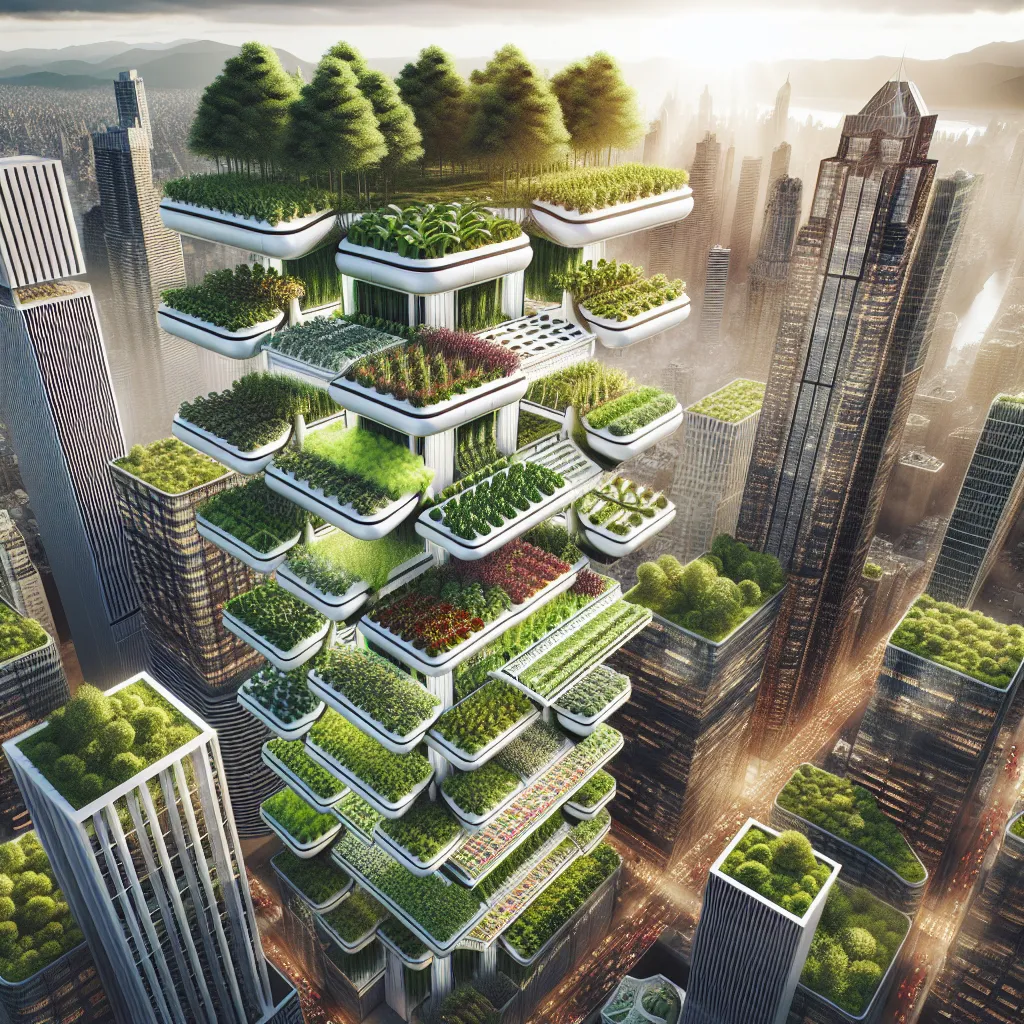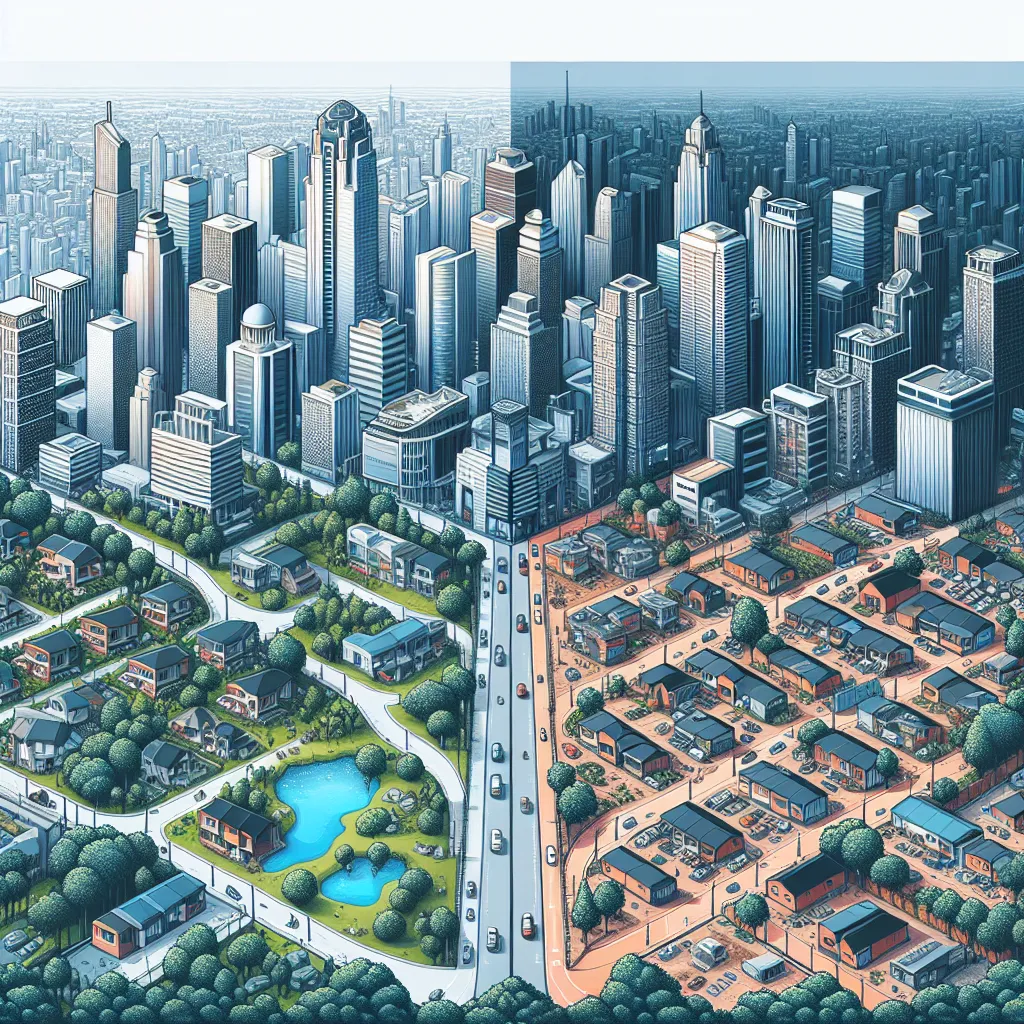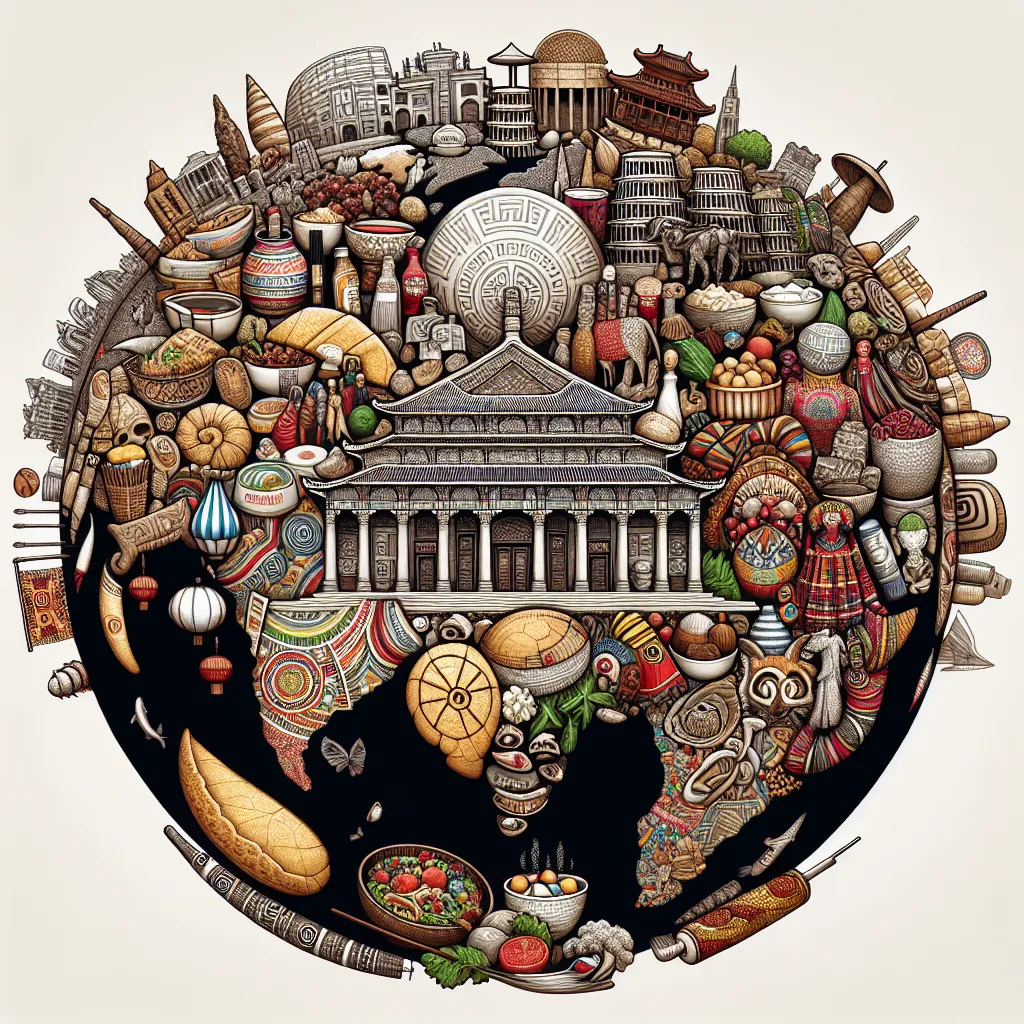The IELTS Reading section is a crucial component of the test, assessing your ability to comprehend complex texts and extract relevant information. Today, we’ll focus on a topic that has been increasingly prevalent in recent years: urbanization’s impact on food production. This subject has appeared in various forms in past IELTS exams and, given its growing relevance, is likely to feature again in future tests.
Nội dung bài viết
Urbanization and its effects on agriculture are at the forefront of global discussions about sustainability and food security. As cities expand, agricultural land diminishes, creating a complex relationship between urban growth and food production. This topic not only tests your reading comprehension but also your awareness of current global issues – a key aspect of the IELTS exam.
Let’s dive into a practice reading passage on this subject, followed by a range of question types you might encounter in the actual test.
 Urban farm in city
Urban farm in city
Reading Passage
The Urban-Agricultural Paradox: Feeding Growing Cities
Urbanization, the process of population shift from rural to urban areas, is one of the most significant global trends of the 21st century. As cities expand and populations concentrate in urban centers, the relationship between urban development and food production becomes increasingly complex and crucial. This urban growth presents both challenges and opportunities for food security and agricultural sustainability.
The rapid expansion of cities often occurs at the expense of fertile agricultural land. Urban sprawl encroaches upon farmland, reducing the area available for food production in proximity to urban centers. This loss of arable land is particularly concerning in regions where urban growth is outpacing careful urban planning. For instance, in China, it’s estimated that urbanization has led to the loss of over 123,000 square kilometers of agricultural land in recent decades.
However, the relationship between urbanization and food production is not entirely negative. Urban areas can drive agricultural innovation and efficiency. The concentration of population in cities creates a substantial market for food products, potentially incentivizing more efficient and productive farming practices. Urban consumers, often with higher disposable incomes, can drive demand for diverse and high-value agricultural products, encouraging farmers to diversify and innovate.
Moreover, urbanization has given rise to novel approaches to food production within city limits. Urban agriculture, including rooftop gardens, vertical farms, and community allotments, is gaining traction worldwide. These initiatives not only contribute to food production but also offer environmental and social benefits. For example, Singapore, a highly urbanized city-state, has set ambitious targets for urban food production, aiming to produce 30% of its nutritional needs locally by 2030.
The impact of urbanization on global food systems extends beyond immediate land use changes. Urban lifestyles and diets typically differ from rural ones, often characterized by higher consumption of processed foods and animal products. This shift in dietary patterns influences agricultural production on a global scale, affecting what crops are grown and where.
Transportation and distribution systems also evolve with urbanization. While the proximity of urban markets can reduce transportation costs for nearby farms, the global nature of food supply chains means that many urban dwellers rely on food produced far from where they live. This long-distance food transportation has implications for both food freshness and environmental sustainability.
Climate change adds another layer of complexity to the urban-agricultural relationship. Cities are significant contributors to greenhouse gas emissions, which in turn affect global climate patterns and agricultural productivity. Conversely, urban areas can be at the forefront of climate adaptation strategies, including climate-resilient agriculture and sustainable urban planning.
As the world continues to urbanize, balancing urban development with food security becomes increasingly critical. Integrated approaches that consider both urban planning and agricultural needs are essential. This might include preserving agricultural land on urban peripheries, promoting urban agriculture, and developing sustainable food systems that can support growing urban populations while minimizing environmental impact.
The future of food production in an urbanizing world will likely involve a combination of traditional farming, high-tech urban agriculture, and innovative food distribution systems. As cities continue to grow, so too must our approaches to ensuring food security and sustainability in an increasingly urban world.
Questions
1-5: Multiple Choice
Choose the correct letter, A, B, C, or D.
-
According to the passage, urbanization in China has resulted in:
A) An increase in agricultural productivity
B) The loss of over 123,000 square kilometers of farmland
C) A decrease in urban population
D) Improved urban planning -
The text suggests that urban consumers can influence agriculture by:
A) Reducing the demand for food products
B) Encouraging farmers to focus on a single crop
C) Driving demand for diverse and high-value products
D) Promoting only traditional farming methods -
Singapore’s goal for urban food production by 2030 is to:
A) Produce 30% of its nutritional needs locally
B) Eliminate the need for food imports
C) Convert all rooftops to gardens
D) Reduce urban population growth -
The passage indicates that urban diets typically involve:
A) Lower consumption of processed foods
B) Exclusive consumption of locally grown produce
C) Higher consumption of processed foods and animal products
D) No significant difference from rural diets -
According to the text, the relationship between urbanization and food production is:
A) Entirely negative
B) Solely positive
C) Complex, with both challenges and opportunities
D) Irrelevant to global food security
6-10: Identifying Information (True/False/Not Given)
Do the following statements agree with the information given in the reading passage?
Write:
TRUE if the statement agrees with the information
FALSE if the statement contradicts the information
NOT GIVEN if there is no information on this
- Urban sprawl always leads to improved agricultural practices.
- Vertical farms are one form of urban agriculture mentioned in the passage.
- The text suggests that all cities have successfully implemented urban agriculture initiatives.
- Long-distance food transportation can impact food freshness and environmental sustainability.
- The passage states that climate change has no effect on the relationship between urbanization and agriculture.
11-13: Sentence Completion
Complete the sentences below.
Choose NO MORE THAN THREE WORDS from the passage for each answer.
- Urban agriculture offers not only food production benefits but also __ and social advantages.
- The text suggests that balancing urban development with food security requires __ approaches.
- The future of food production in urban areas may involve a mix of traditional farming, urban agriculture, and innovative __.
Answer Key and Explanations
-
B
Explanation: The passage states, “in China, it’s estimated that urbanization has led to the loss of over 123,000 square kilometers of agricultural land in recent decades.” -
C
Explanation: The text mentions, “Urban consumers, often with higher disposable incomes, can drive demand for diverse and high-value agricultural products, encouraging farmers to diversify and innovate.” -
A
Explanation: The passage notes, “Singapore, a highly urbanized city-state, has set ambitious targets for urban food production, aiming to produce 30% of its nutritional needs locally by 2030.” -
C
Explanation: The text states, “Urban lifestyles and diets typically differ from rural ones, often characterized by higher consumption of processed foods and animal products.” -
C
Explanation: Throughout the passage, the relationship is described as complex, with both challenges (like loss of farmland) and opportunities (like driving innovation). -
FALSE
Explanation: The passage does not suggest that urban sprawl always improves agricultural practices. It actually mentions the loss of agricultural land due to urban expansion. -
TRUE
Explanation: The text explicitly mentions “vertical farms” as a form of urban agriculture. -
NOT GIVEN
Explanation: While urban agriculture initiatives are mentioned, the passage does not state whether all cities have successfully implemented them. -
TRUE
Explanation: The passage states, “This long-distance food transportation has implications for both food freshness and environmental sustainability.” -
FALSE
Explanation: The text clearly states that climate change adds “another layer of complexity to the urban-agricultural relationship.” -
environmental
Explanation: The passage mentions that urban agriculture initiatives “offer environmental and social benefits.” -
integrated
Explanation: The text states, “Integrated approaches that consider both urban planning and agricultural needs are essential.” -
food distribution systems
Explanation: The passage concludes by mentioning “innovative food distribution systems” as part of the future of food production in urban areas.
Common Mistakes to Avoid
- Overlooking specific details: In questions like number 1, it’s crucial to pay attention to precise figures mentioned in the text.
- Making assumptions: For True/False/Not Given questions, stick strictly to the information provided in the passage. Don’t bring in outside knowledge or make inferences beyond what’s stated.
- Misinterpreting complexity: The passage presents a nuanced view of urbanization’s impact on food production. Avoid oversimplifying this relationship in your answers.
- Ignoring context: When completing sentences, ensure your answer fits grammatically and contextually with the given part of the sentence.
- Time management: Don’t spend too much time on one question. If unsure, make an educated guess and move on.
Vocabulary Focus
- Urbanization: /ˌɜːrbənaɪˈzeɪʃən/ (noun) – the process of making an area more urban
- Encroach: /ɪnˈkrəʊtʃ/ (verb) – to gradually take away someone’s rights, land, etc.
- Arable: /ˈærəbl/ (adjective) – (of land) suitable for growing crops
- Incentivize: /ɪnˈsentɪvaɪz/ (verb) – to encourage someone to do something by offering them a reward
- Allotment: /əˈlɒtmənt/ (noun) – a small piece of land rented from a local authority or private owner for growing fruit and vegetables
- Resilient: /rɪˈzɪliənt/ (adjective) – able to recover quickly from difficult conditions
Grammar Spotlight
Pay attention to the use of comparative structures in the passage, such as:
“As cities expand and populations concentrate in urban centers, the relationship between urban development and food production becomes increasingly complex and crucial.”
This sentence uses the comparative adverb “increasingly” to show a progressive change. The structure “As X happens, Y becomes more Z” is common in academic writing to show cause and effect relationships.
Tips for IELTS Reading Success
- Practice active reading: Engage with the text by underlining key points and making mental notes as you read.
- Improve your vocabulary: Regularly learn new words related to urban development, agriculture, and environmental issues.
- Time management: Allocate your time wisely among the different sections of the reading test.
- Skim and scan effectively: Quickly identify where specific information is located in the passage.
- Read the questions carefully: Ensure you understand exactly what each question is asking before searching for the answer.
- Use contextual clues: If you encounter unfamiliar words, try to deduce their meaning from the surrounding context.
- Stay calm and focused: Remember that the reading passage contains all the information you need to answer the questions.
By practicing with passages like this and familiarizing yourself with various question types, you’ll be well-prepared for the IELTS Reading test. Remember, consistent practice and exposure to a wide range of topics are key to improving your reading skills and achieving a high score in the IELTS exam.
For more practice on urban-related topics, you might find our article on urbanization and the decline of local communities helpful in broadening your understanding and vocabulary in this area.


